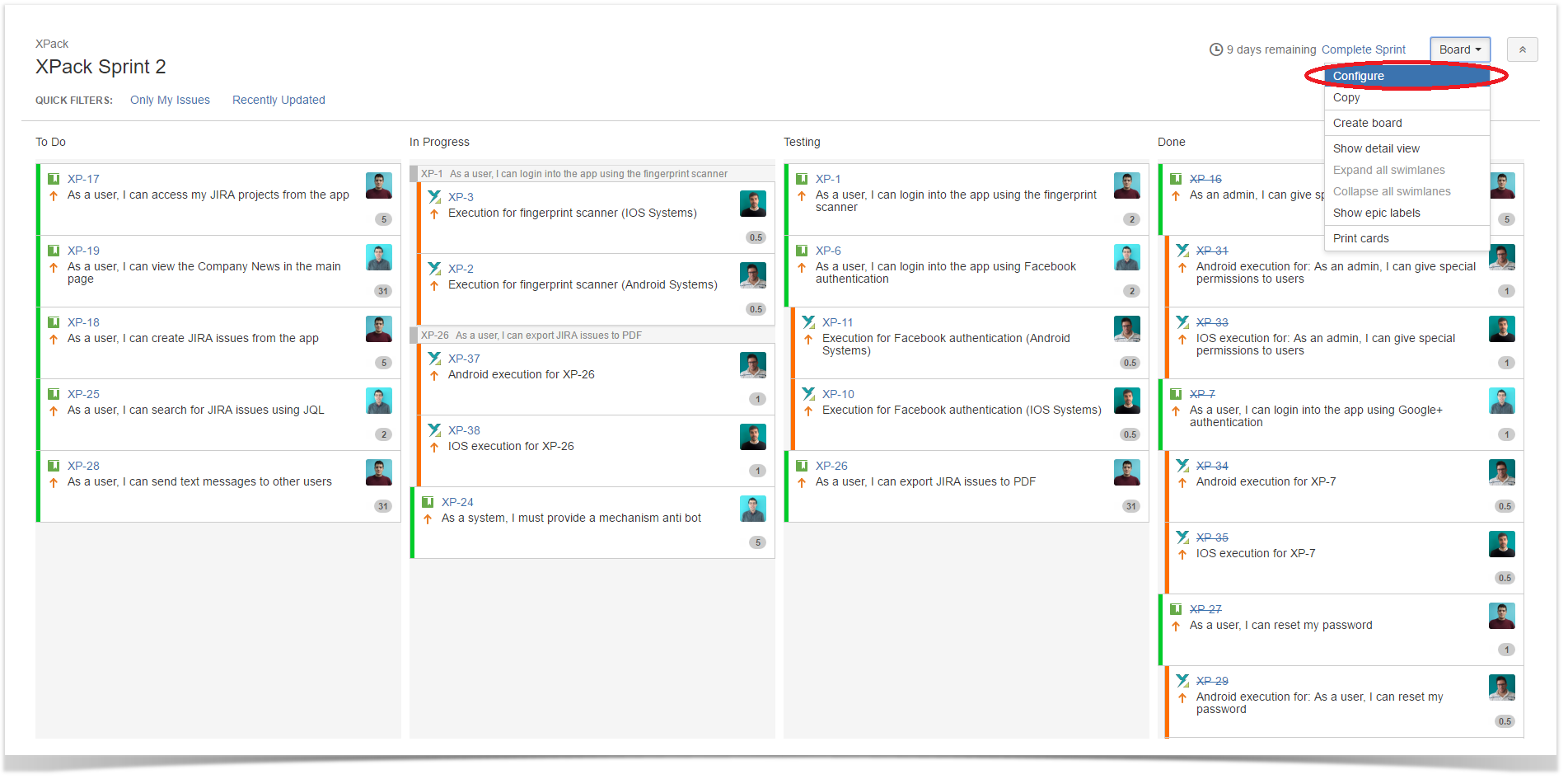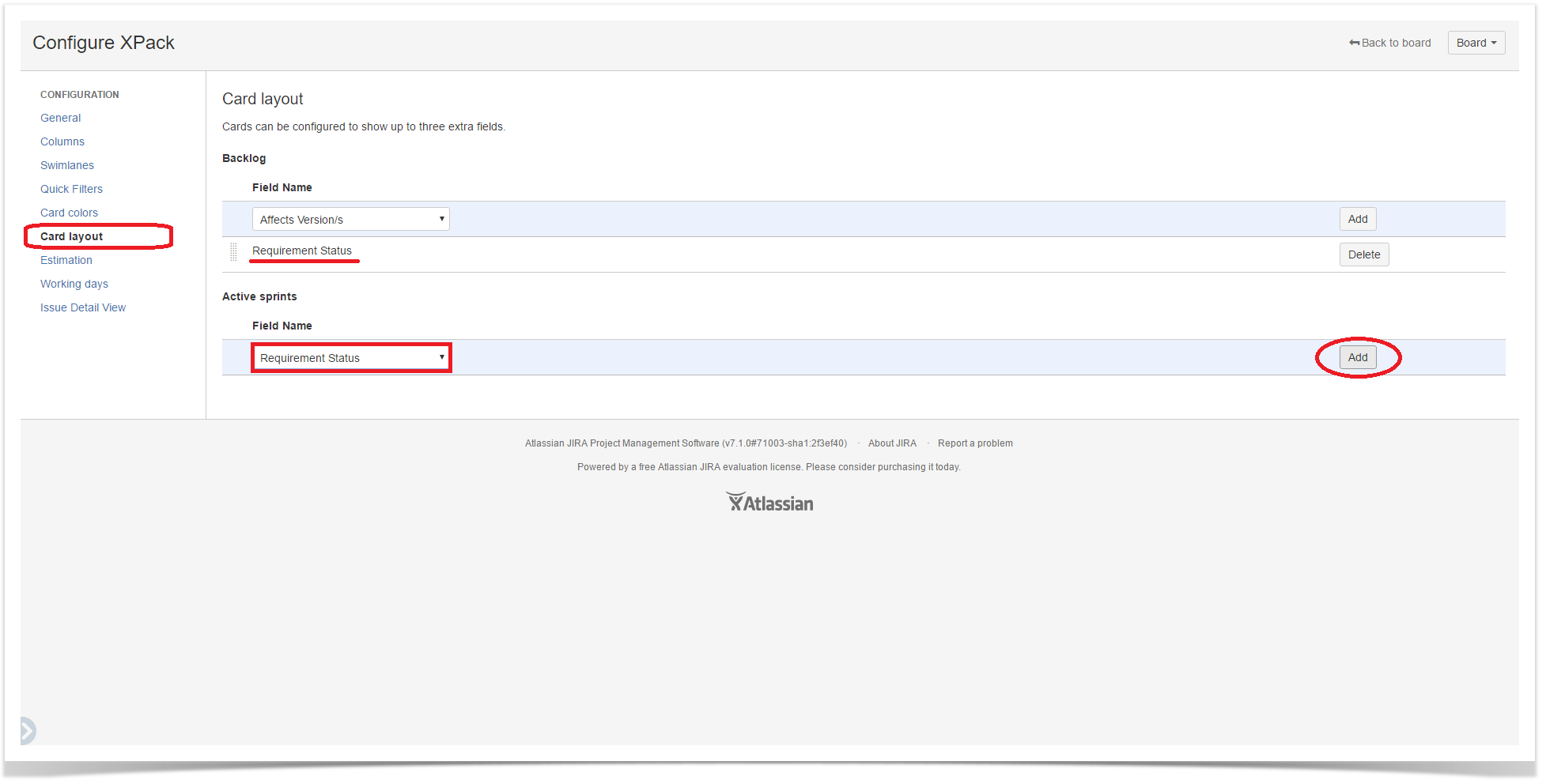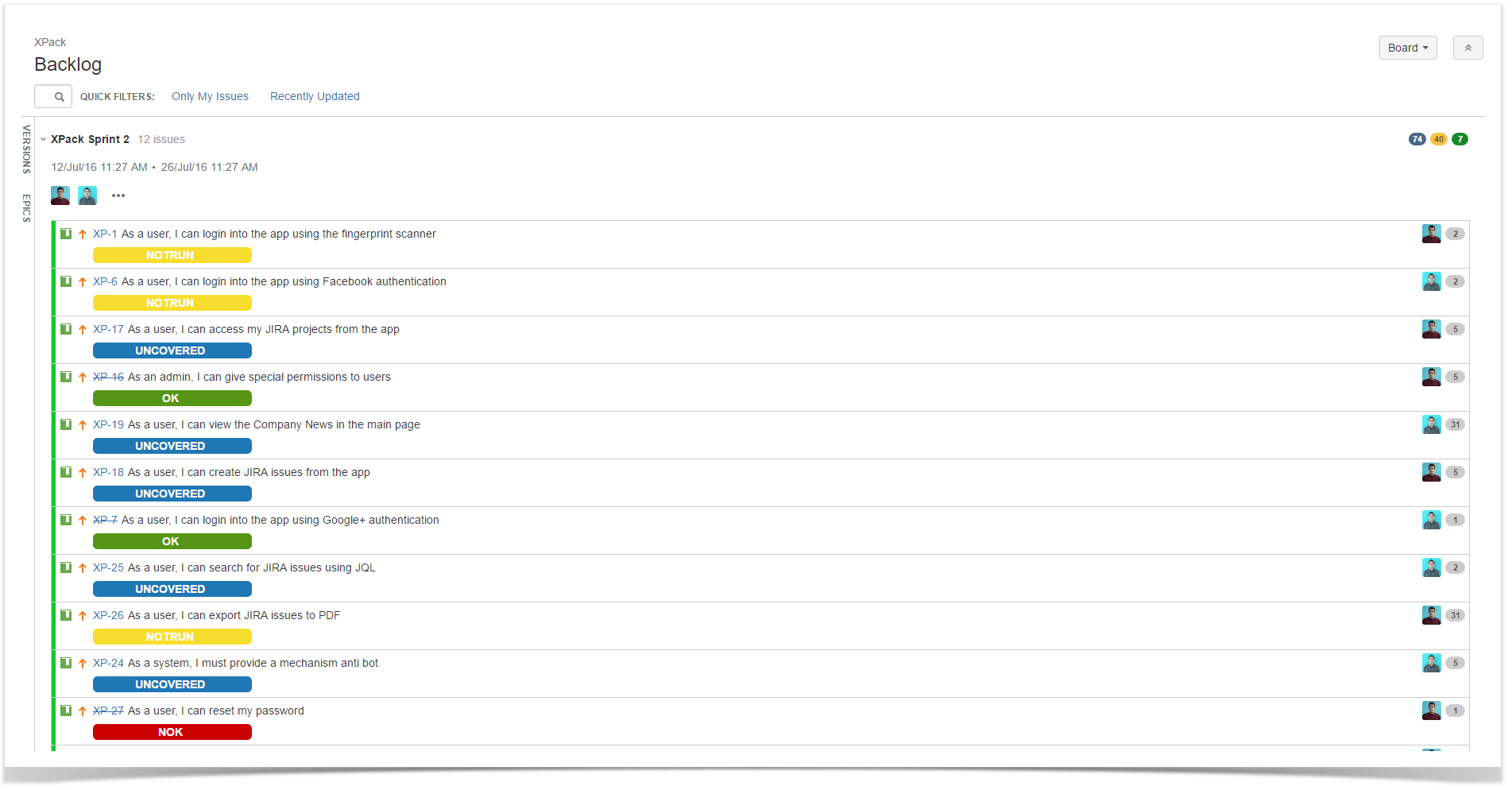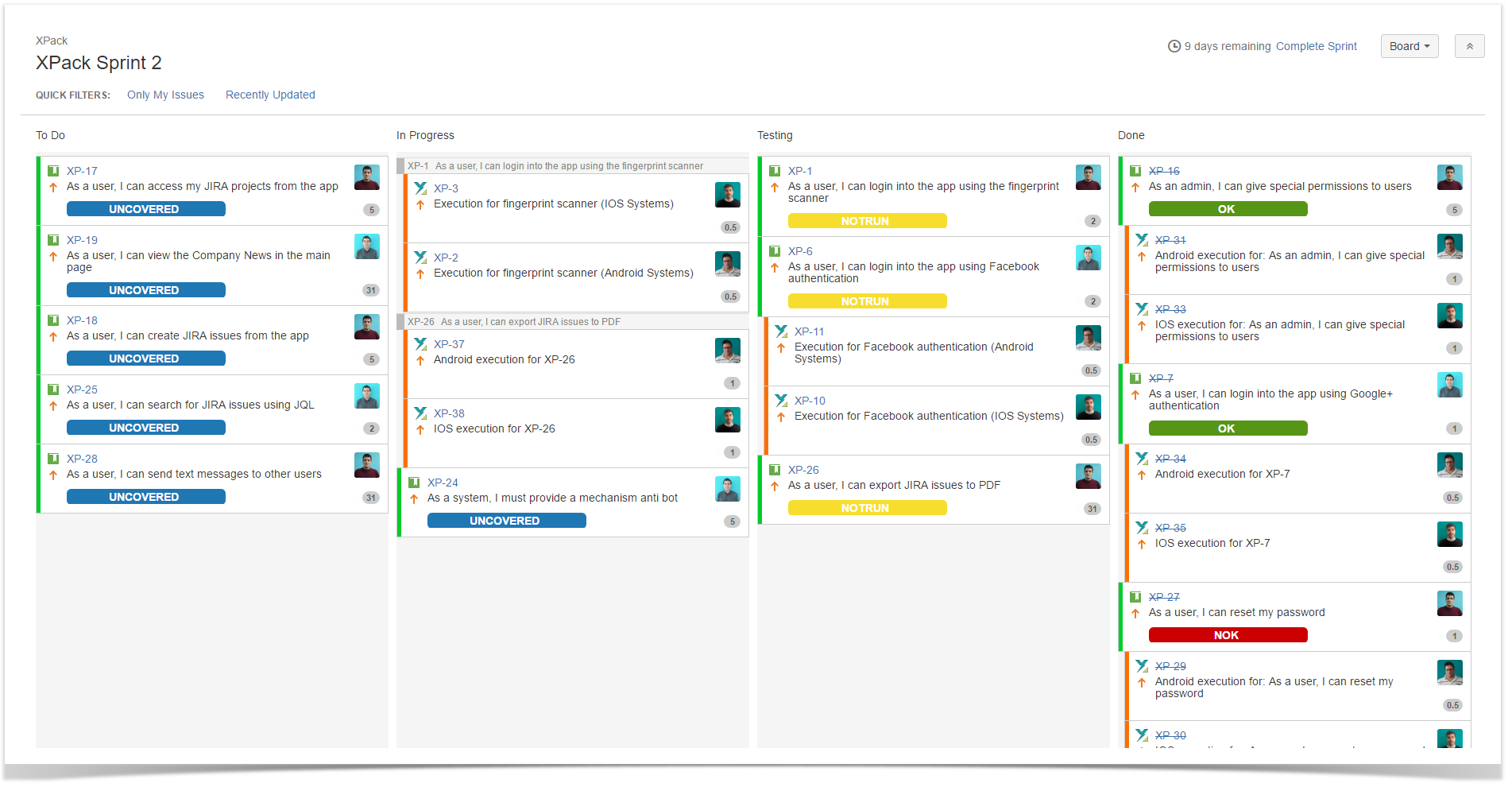Page History
Since Xray for JIRA 2.0, Xray integrates with Agile giving to give you a flexible way of viewing, managing and reporting some Xray issue types.
Agile boards are an excellent way for visualy keeping to visually keep track of the progress of project's related tasks.
UsualyUsually, you use Agile boards for managing Sprint's to manage sprint-related issues, such as user stories, tasks and defects.
You can extend the usage of Agile boards to make them also testing-aware.
Agile boards are great, but they do not replace other types of reports where more information may be consulted and analyzed.
| Table of Contents |
|---|
Using Xray issues in Agile boards
Since Xray uses JIRA Jira issue types for most of its entities, in theory, you're able to include them in your boards. However, the reason to include may be different for each one of them may be different.
Having in mind that Tests and Pre-Conditions are like test case templates, including them in a board does not make sense unless you want to track the specification progress, in case you have a specific workflow implemented for that purpose. The same applies in fact to Test Sets. Some may prefer to use one , or more , Task issue(s) for dealing with the specification effort of Tests and/or Test Sets.
Including individual Test Runs themselves would not be that useful, since . Since a Test may have multiple runs; therefore, you your board would be over-populated. Besides itMoreover, Test Runs are not issue types so they cannot be included in Agile boards.
Test Executions may be assigned to a Sprint sprint and may be tracked in on a board. However, this may not scale if Continuous Integration is being used, due to the potential huge amount of Test Executions that may be created.
Sub-Test Executions are an excellent way for visualy identifying to visually identify the associated Test Executions that validate a given requirement, since they're created as sub-tasks for the requirement issue and will appear accordingly in the board. A limitation is that a Sub-Test Execution is a sub-task of only one issue, in this case a requirement. Sometimes, this may not be applicable , since because it may be necessary to have Test Executions with Tests associated with multiple requirements.
A Test Plan tracks a group of Tests, independently regardless of the amount number of Test Executions , for a given version of the SUT. Test Plans may be used to group the Tests in the scope a given Sprint sprint and thus, consolidate the testing test results.
In sum, you may extend Agile boards for testing purposes , for addressing to address two points:
- specification & organization
- planning & execution
| Use case | Notes |
|---|---|
| Test |
|
|
|
| Pre-Condition |
|
|---|
|
|
| Test Set |
|
|---|
|
|
| Test Execution |
|
|
|---|---|---|
Sub Test Execution |
|
|
| |
| Test Plan |
|
|---|
|
|
...
Usage scenarios
A typical concern with Agile boards is having them as more clear , and as "non-polluted" , as possible, so you can focus on what's important.
Some relevant and high-level information may be obtained from specific custom fields associated to with requirements, or (Sub) Test Executions, or Test Plans. These fields may be included in the board cards.
Note that you are limited on the amount number of fields (3) you're able to include in each card present on the board.
Next, you may find some possible scenarios for integrating testing into your Agile boards, although you're free to adapt each one to your needs.
...
You can add the Requirement Status custom field to the requirement issues in the Active Sprint. It’s actually a useful feature provided by JIRA that Jira. It gives you the possibility ability to add custom fields in both views: Active Sprint and Backlog. Adding certain Xray custom fields, such as the Requirement Status, may be a good improvement for your testing teams because it provides a quick overview about what are of the current statuses of the requirement issues.
In order to To add the Requirement Status on to the Agile Board you have to , perform the following steps:
...
Step 2: Click the Board button and then click the Configure button.
...
Step 3: Click the Card Layout and add the Requirement Status to the Backlog and Active Sprint.
Step 4: The Backlog View and the Active Sprint View now have the Requirement Status custom field.
- Backlog View
- Active Sprint View
...
As a suggestion, you may also add the Test Environments custom field. It may be useful to have different Sub-Test Executions to test the requirement in different environments.
...
Creating a Sub-Test Execution from the Requirement Issue will let you track related executions in on the Agile Board, so you will see all work that needs to be done to “finish” a requirement, either from by developers or testers.
You can have a quick view of all test executions of a requirement, directly from the JIRA Jira Agile board, as long as the executions are created as Sub-Test Execution issues.
...
By including the Test Plan Status custom field, you are able to see right away the overal overall progress of your Test Plans.
You may also include include the Test Execution Status custom field in your cards; thus, thus Sub-Test Executions progress may be promptly visualized.
Requirement Status may also be included on in the card configuration, allowing the user you to assess the coverage status of the requirements present on the board.





